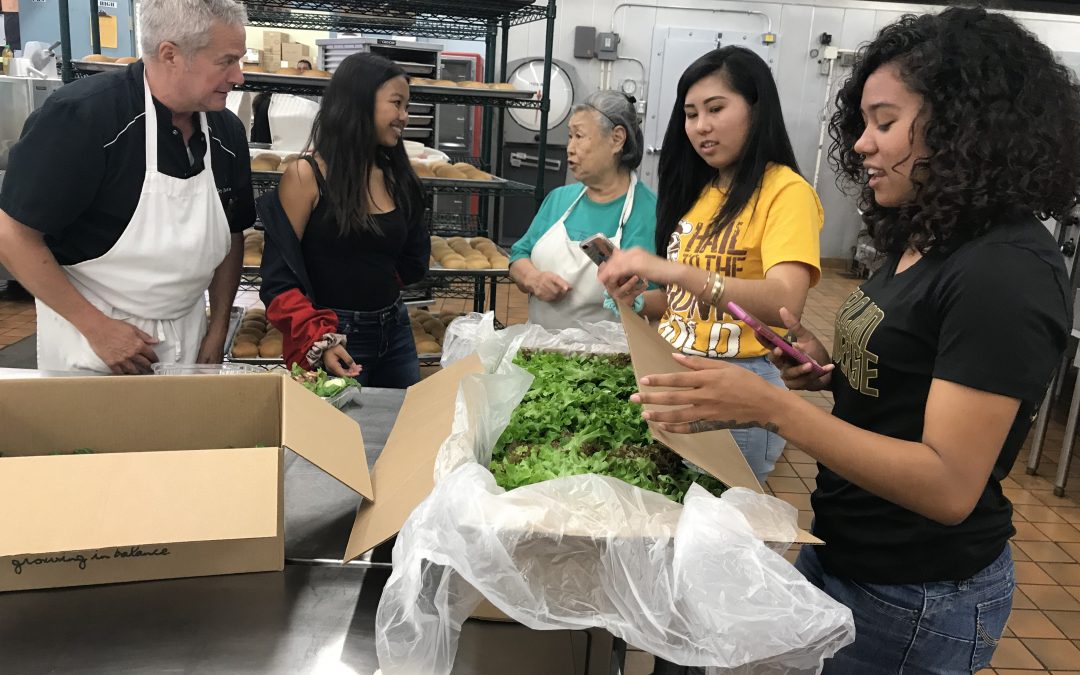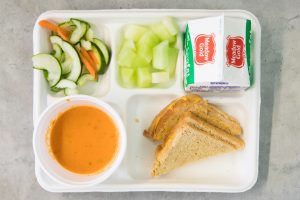By. Greg Christian, Founder and CEO, Beyond Green Partners
In purchasing local farm grown food, schools can be strong economic drivers for the community while contributing to the preservation of natural resources needed to sustain life. Schools that serve fresh, flavorful foods can encourage healthy eating habits and inspire stronger connections to the environment. Additionally, schools can ensure they are feeding their students food that is safe and of the highest quality. With benefits like these, why aren’t more schools serving locally grown food?
In short, the list of challenges is almost as long. Adding local food to school menus can feel a lot like trying to find a way into a double Dutch jump rope game. Daily operations are moving fast and food service professionals are on the sidelines waiting for the opening to widen. Local food typically costs more money, many distributors are not set up to purchase from local farms, and cooks are not trained in preparing fresh foods.
But the health of our people, community, and planet requires action. Easing into farm to school procurement by focusing on a different local ingredient each month provides a foot in the door; however, integrating farm fresh food for the long-term requires a look across the entire cafeteria operation.
Working in school kitchens across the country, I’ve identified the following five areas where schools often miss opportunities that would allow them to buy more farm fresh food for their cafeteria programs.
- Define local and track local food purchases. Defining this term will make it easier for you to make procurement decisions and to analyze data. It sets the foundation for telling your story, monitoring progress, and demonstrating success, which helps build support for buying more local food down the road.
- Talk to your customers. Ask students what they want to eat and then taste test the recipes to solicit their feedback on how to make the food better. Then continue to refine the recipes based on input from students. Making meals students prefer increases participation and decreases waste, two significant ways to have more money to buy from local farmers.
- Find money in the garbage. Everything in the garbage is wasted resources – overproduction of food runs rampant (sometimes dozens upon dozens of hotel pans full of food go unused), expired food is tossed daily, and plate waste that students take and do not eat fills garbage cans.
- Train staff to cook from scratch. With several decades of kitchens employing people who open boxes and cans and place frozen food on sheets to heat, the skills to cook from scratch are less present in school kitchens today. To make food taste good for hundreds or thousands of kids, kitchen staff need training on everything from simple tasks such how to properly cut an onion to complex culinary skills like imparting flavor into chicken tetrazzini. Staff also need training in how to cook for optimal freshness since food loses flavor and vitality sitting in warmers all morning and through repeated reheating.
- Conduct a local food inventory and visit area farms. Know what grows in your area and when each item is in season. Develop relationships with farmers, see the land, and learn what it takes to grow, process, and transport the food. While you will likely purchase food through a local distributor, relationships are key to solving problems, understanding food system issues, creating partnerships to enhance student learning, and overall success of your local food program.
Local procurement works. Kohala Elementary, Middle, and High Schools in Hawai’i began sourcing local food for their food service program alongside a kitchen operations makeover that included data measurement, extensive inquiry into customer preferences, waste reduction strategies, staff training, and developing relationships with local farmers.
With the flip of an operational switch the Kohala schools went from procuring 20% of their total expenses from local farms (based on data aggregated from the previous semester) to purchasing 53% at the end of the first semester of the new program, including 22% dairy, 22% produce, and 9% protein.
Due to waste reductions, this increase in local food purchases accompanied monetary savings and an increase in the number of students eating school meals. More healthy food in more students’ mouths means a win for families, school personnel, farmers, the community, and the land.
It’s time to start asking ourselves whether our cafeteria programs match our values and meet our children’s needs, and how these programs can become a more integral part of supporting our schools’ goals.
Greg Christian is a highly successful consultant, chef, author of the 9-Minute Nutrition Ninja, and entrepreneur offering solutions to help transform food service into a more sustainable entity. His involvement with the Organic School Project and strong background in the food service sector led him to launch Beyond Green Partners, a sustainability consulting firm, which provides organizations in the food service industry with in-house dining services recommendations for sustainable solutions and implementation strategies, as well as the expertise to adopt sustainable operations.


